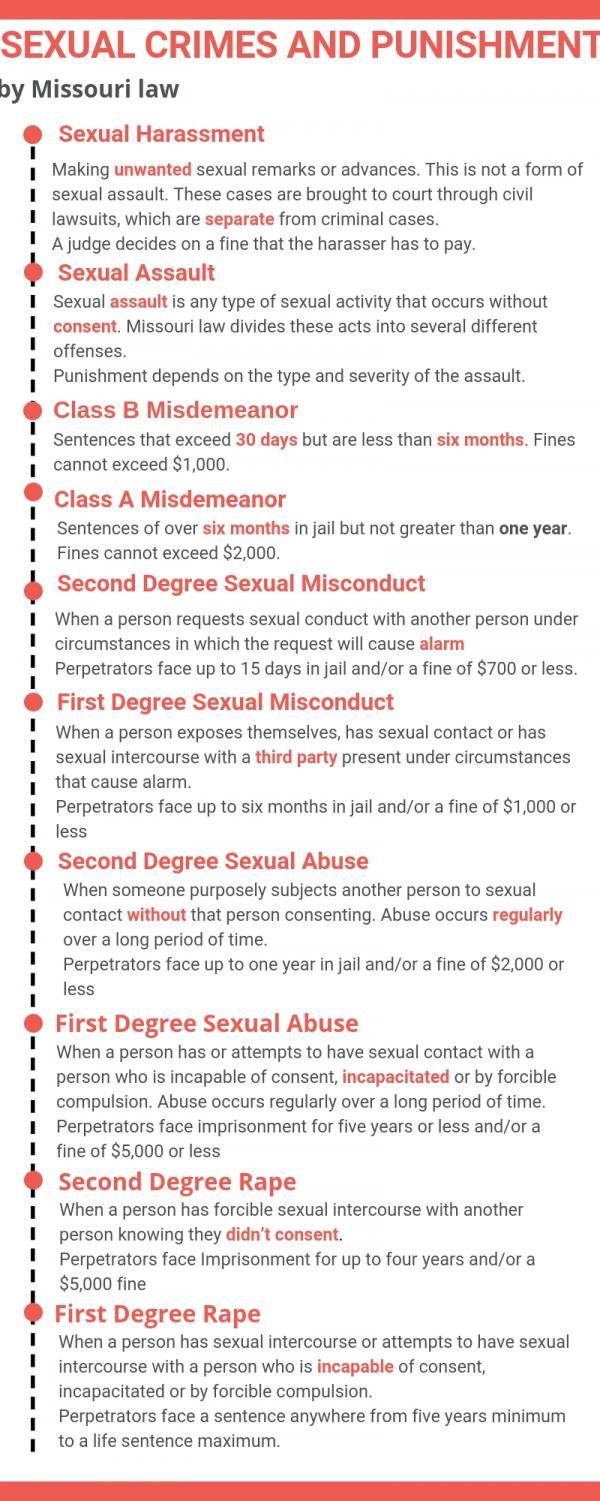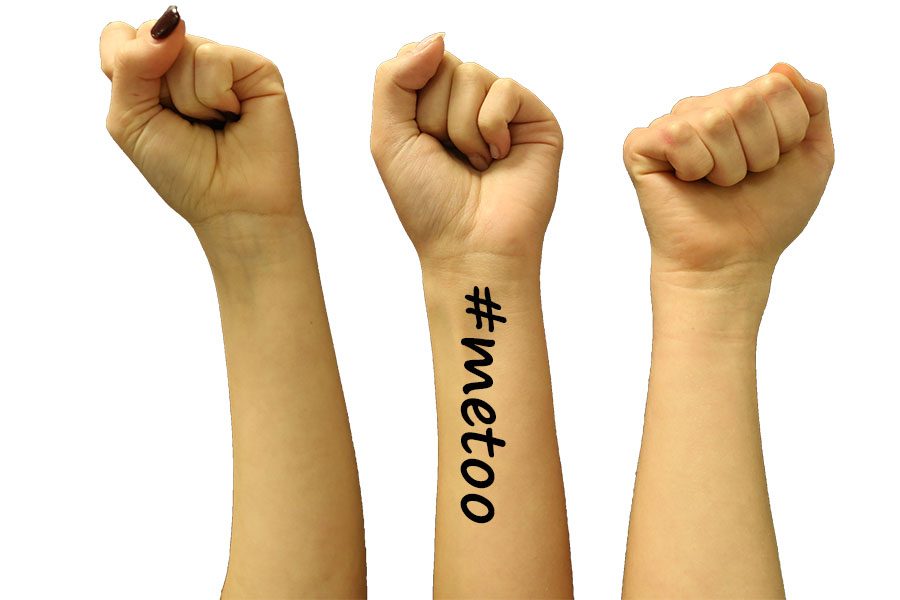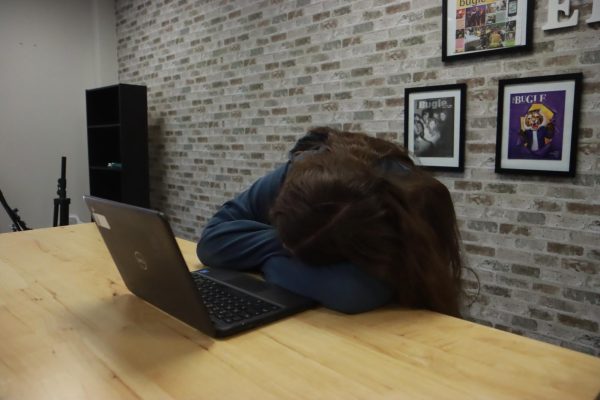Putting up a fight
A year after #metoo goes viral, nationally, survivors continue to speak up but sexual misconduct is still murky territory, especially close to home
A raised fist has become a symbol of the #metoo movement and the fight for women’s rights.
Don’t go to the car alone at night. Walk with car keys out. Check the car before getting in. Avoid parties with drinking. And cover up as much skin as possible.
Today’s steps in escaping unwanted sexual advances are the same as those for past generations. The difference is that after years of silence, both young men and women and grown adults are beginning to break the silence and publicly acknowledge past violations.

The possibility of being sexually assaulted or harassed is an everyday reality for teenagers. In an EHS-hub survey, 15.3 percent of the 356 students reported experiencing sexual assault while 19.2 percent said they have witnessed it.
Safety precautions drilled in over the years become second nature.
“I always have my phone. Sometimes I’ll make sure the keypad is up in case I need to call somebody,” Evie Lozano (11) said. “Make sure you’re never alone and you’re always with another person. Avoid situations that might not be safe.”
THE PAST
Reporting on sexual assault is challenging since historically victims have failed to report instances to authorities.
It wasn’t until the feminist movements of the 1960s and 1970s that the public became aware of how frequently sexual assault occurred. Activists called for a week in April to be deemed Sexual Assault Awareness Week and began organizing marches to protest sexual violence.
Congress enacted rape shield laws in 1975, prohibiting the defending side from using a victim’s sexual behavior or history as evidence in trial. In 1960, only ten out of every 100,000 people reported rapes, but by 1980, that figure rose to around 38 per 100,000 people, according to Cambridge University.
However, the issue didn’t gain major attention until Anita Hill publicly testified against Supreme Court Nominee Clarence Thomas in 1991, accusing him of sexual harassment. He proceeded to get the appointment and has served on the Supreme Court since.
After a national broadcast of the case, harassment complaints filed with the Equal Employment Opportunity Commission doubled following Hill’s testimony, according to Time.
THE PRESENT
But discussions involving the topic of sexual misconduct are more relevant now than ever.
“We have a high sexual assault rate and so many people are being harmed,” Lozano said. “By starting discussions and bringing awareness to the issue, we can create an environment where victims may be more comfortable in reporting their assault.”
Over 17,700,000 women have reported cases of sexual assault since 1998, reports Me Too, a movement founded to help survivors of sexual violence. One in five women and one in 71 men will be raped at some point in their lives, according to the NSVRC.
Sexual violence also occurs even more with teenagers and young adults.
Females ages 16 to 19 are four times more likely to be victims of rape, attempted rape or sexual assault than the rest of the population. In the U.S., one out of nine girls and one in 53 boys younger than age 18 experience sexual assault or abuse, says the Rape, Abuse & Incest National Network.
“We need to accept that it happens,” Aaron Christianson (11) said. “It’s not just a thing we hear about or see in movies or on TV.”
The problem is not only within sexual violence. Instances of sexual harassment are so common that the majority of college students have encountered it.
About 62 percent of female college students and 61 percent of male college students report that they have been sexually harassed at school, according to the American Association of University Women.
“I know from myself in being a student here that most of the harassment takes place in settings where it’s not overt,” Teresa Yakel, Social Studies, said. “It’s more subtle. It’s more in statements or it’s in inappropriate gestures.”
Sexual harassment is characterized as any form of unwanted sexual advances, jokes, or gestures. But it has become so normalized in today’s culture that many victims don’t recognize when it happens.
In the Hub’s survey, 50.3 percent of respondents reported that they knew a person who had received a photo of someone’s body without consent, and 43.3 percent reported that it happened to themselves.
Unfortunately, victims of both sexual harassment and assault have shown that most incidents go unreported and perpetrators escape consequences.
Victims often don’t report because their honesty is in turn called into question.
The world saw this play out when Christine Blasey Ford accused Supreme Court Justice Brett Kavanaugh of sexually assaulting her in high school. President Trump mocked Ford’s statement and sided with Kavanaugh in denying the allegations.
Ford’s failure to report an assault that happened in high school until age 52 caused great concern to the public. The debate lies in whether victims who wait to report sexual assault are lying or if they waited to report the incident until they felt more comfortable.
“You have people running for high offices and just because someone doesn’t like them or like their beliefs, they’re going against them,” Ethan Knapp (10) said. “I don’t like it whenever people just make false claims just to hurt someone.”
However, the reality is that only two to eight percent of people make false reports of sexual assault, according to Resilience, a Chicago-based advocacy program founded in 1974.
Only 30 percent of every 1,000 rapes are reported, and out of those 1,000 rapes, only six attackers will go to jail. As for college students, only 10 percent of victims report campus assault.
“It’s an embarrassing thing to talk about,” Christianson said. “It’s not something that you want to go through. It’s not something that you want other people to go through.”
EHS presents its sexual harassment policy each year at class meetings, encouraging all students to report any incidents they have to a trusted adult.
“It’s very important that if something is happening, that you tell someone,” George Calhoun, assistant principal, said. “I’ve always instructed that they can come talk to me and let me know,”
But as often as harassment is said to happen, very few students end up communicating this issue.
“They don’t want to report them because they know if they come to me or they come to the counselor or even come to their parents, as the adults we are going to take action,” Calhoun said. “They don’t want that person to get in trouble.”
A CHANGE
The #MeToo movement, founded in 2006 by Tarana Burke, strives to break this cycle of inaction.
The original goals of the movement are to help survivors of sexual violence, specifically women of color, according to Burke. She also wants to evolve the conversation about sexual misconduct and change the way that cases are handled.
The movement picked up momentum in October 2017 when The New York Times published an article loaded with accusations against movie producer Harvey Weinstein.
The following July, a grand jury charged Weinstein with with six counts of sexual assault including rape in the first and third degree. Actresses that brought up the allegations against Weinstein said that he assaulted dozens of women auditioning for roles in his movies.
After the controversy, actress and sexual assault survivor Alyssa Milano posted a tweet asking for sexual assault and harassment victims to reply with the hashtag “#MeToo.”
Soon, fellow survivors began posting their experiences to social media with the hashtag. As the movement went viral, more celebrities began sharing their personal stories.
Over the last year, personal accounts of sexual assault and harassment using #MeToo have been posted over 19 million times on Twitter.
Immediately following Weinstein’s exposure, Olympian McKayla Maroney posted a tweet detailing her history of sexual abuse by USA Gymnastics doctor Larry Nassar. Judge Rosemarie Aquilina sentenced Nassar 40 to 175 years in prison for sexually abusing over 160 gymnasts.
The case demonstrated the courage that #MeToo has instilled in survivors as well as its role in penalizing over 71 accused perpetrators since it spread through social media.
“Before it was something that women had to endure,” Yakel said. “With #MeToo we were allowed for the first time collectively to speak up and say, ‘This is happening to me, and I’m not okay with it.’”
CONSEQUENCES
Sexual harassment and assault can have serious consequences. Thirty-five percent of men and 81 percent of women say they have faced significant short or long-term effects from sexual assault.
“Sexual assault and sexual misconduct are all traumatic experiences so like all traumas they are going to have consequences and mental health effects,” naomi warren, social worker, said.
Effects of sexual assault can be broken up into four categories: physical, psychological, social and health-risk behavior, according to the Center for Disease Control.
Physical effects can include sexually transmitted diseases, chronic pain and frequent migraines.
In addition, trauma can cause mental illness. Survivors can suffer from depression, anxiety, post-traumatic stress disorder and flashbacks.
Trauma can deteriorate a victim’s relationships with friends, family or romantic partners.
“One of the most paramount issues would be around trust and intimacy and linking again back to the issue of trauma,” warren said. “There can also be an emotional detachment.”
As for health-risk behaviors, victims of sexual violence are at a higher risk of misusing alcohol and drugs or developing eating disorders, according to the National Center for Biotechnology Information.
“Culturally, there is a sense of shame, as well, which can impact communication,” warren said.
THE FUTURE
With 50.4 percent of respondents to the Hub’s survey admitting to knowing someone who had been sent photos of another person’s body without consent, it’s likely that most teenagers don’t understand the gravity of sexual harassment.
Victims of sexual harassment have the ability to file a civil suit in which a judge can give the harasser a fine or even jail time. Those unsolicited explicit photos are far from innocent and could result in serious consequences for the senders if reported.
The first offense would qualify as a Class B misdemeanor, for which sentences may exceed 30 days but are less than six months. Fines cannot exceed $1,000. The second offense would qualify as a Class A misdemeanor, for which sentences may exceed six months in jail but not greater than one year. Fines cannot exceed $2,000.
The rise of the #MeToo movement has sparked growing awareness in both men and women that sexual assault and harassment have repercussions.
“If something were to happen it would make me feel a lot more empowered because I know that I’m not alone and there’s so many other people who are doing it too,” Lozano said.
Future generations will no longer tolerate the social acceptability of sexual misconduct, and the perpetrators that carry out these acts will be reprimanded.
In an environment where victims feel confident in coming forward, the issue of honesty will be reduced and victims will feel safe enough to report their experiences when they happen.
“It’s a good way for women to connect with other victims and survivors to see that they’re not alone,” Alyce Koch (11) said.
warren compared the #MeToo movement to the movie “The Gremlins,” crediting the analogy to research professor and author Brené Brown.
“The gremlins are these little monsters, and they don’t survive in light,” warren said. “These shame gremlins can come out, and they can tell you things that aren’t necessarily true. But when you shine a light on them, they go away. That’s what I think about with the #MeToo movement. All of these stories are shining a light that’s helping to decrease the stigma around it.”
With so many people speaking up, survivors who do find the courage to say something will not need to walk alone and suffer in silence. Being aware is just one step, speaking up, another. A safer environment for all may be within reach for this generation if the youth of America call out sexual misconduct now to prevent such behavior for future generations.
Your donation will support the student journalists of Eureka High School - MO. Your contribution will allow us to purchase equipment and cover our annual website hosting costs.

This is Brown's first semester on staff where she serves as a reporter for the EHS-hub. Brown enjoys playing soccer, hanging out with friends, and...

This is Peterson's seventh semester on staff where she serves as the Managing Editor for both the Eurekana Yearbook and EHS-hub. Peterson enjoys sleeping,...


















